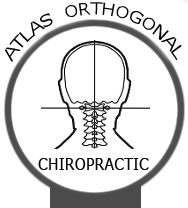About
Atlas Orthogonal Chiropractic Treatment
Once the atlas is moved out of its orthogonal position the body tries to compensate to maintain its center of gravity. It does this by keeping the head directly over the center of the feet. However to maintain the level position of the head the rest of the spine adapts and is thrown out of alignment. The resulting misalignment may cause nerve pressure and inflammation causing a disruption of the normal functioning of the nervous system. This one dysfunction may play a role in a multitude of symptoms and pain in different areas of the body.
Besides directly impacting the neck, we can see other effects such as decreased curves in the neck, scoliosis, and changes in the alignment in the shoulders and pelvis. These changes in the alignment affect the structural integrity of the skeletal system. This in turn can result in a host of other symptoms and problems, especially headaches, neck pain, facial pain, and back pain.
An Atlas Orthogonist treats this condition through a system of examination and diagnosis that utilizes a detailed scientific and biomechanical protocol. Precise measurements of the atlas misalignment are the basis of the treatments.
An evaluation of the patient’s condition is rendered by the doctor on the first visit. A complete and thorough history is critical in aiding the doctor in the proper diagnosis. This history includes asking a variety of questions pertaining to every aspect of the patient’s symptoms and injuries. The exam also includes orthopedic/neurologic, and postural assessment of imbalances in the spine that would lead to problems with the health of the spine and its related symptoms and pain. The first step of the diagnosis is to determine the degree in which the atlas is misaligned. Very precise x-rays are taken which show the doctor exactly how the atlas is displaced. The x-rays taken are invaluable in making the most precise atlas correction which is as unique to the patient as their own fingerprint. Following the diagnosis a specific treatment protocol is developed to align the atlas into the correct neutral/orthogonal position.
In order to treat this condition, Dr. Roy Sweat, the founder of the atlas orthogonal procedure, devised a method using a percussion wave, which is a vibration to re-position the atlas vertebra. Dr. Sweat is considered by many to be one of the foremost authorities in the world on the cervical spine. The history of treating the atlas goes back to the early 1900’s when Dr. B.J. Palmer, the developer of chiropractic, spent many years of clinical research in discovering that it was the atlas that controlled the position of the head and the resulting position of the rest of the spine
Dr. Palmer taught to correct the atlas position using the hands with about 40 pounds of force. Dr. Sweat and Dr. John F. Grostic were taught by Dr. Palmer. In his extensive clinical research, Dr. Grostic found that much less force was actually necessary to correct the atlas into position. Dr. Sweat in his further research discovered that even less force was actually needed. Dr. Sweat invented and engineered a highly advanced instrument that without pain or pressure is able to accurately re-position the atlas vertebra. The procedure is non-invasive and gentle.
The results are often immediate and dramatic. However, the atlas may have been out of alignment for some time before symptoms actually appear. Without proper treatment the symptoms only get worse, and the problem becomes more difficult to correct. The longer the existing condition is without treatment, the more time and treatment it may take to heal.
Atlas Orthogonal Technique
is an upper cervical chiropractic treatment technique created by Roy Sweat, DC
Upper Cervical Specific Atlas Orthogonal Technique
is an upper cervical chiropractic treatment technique created by Roy Sweat, DC
Learn how Dr. Roy W. Sweat developed the Atlas Orthogonal Procedure
Upper Cervical Specific Chiropractic is a branch of chiropractic developed and promoted by B. J. Palmer beginning in the 1930s until his death. According to Upper cervical chiropractic, a vertebral subluxation can only occur in upper cervical vertebrae.
Therefore this technique places great importance on the anatomical structures of the atlanto-occipital joint, pointing out that it floats on two toed-in spoon like surfaces and is a potential source of instability. This potential instability of the atlanto-occipital joint is theorized to predispose people to an “adaptational imbalance” in the head/neck region.
According to Upper cervical chiropractic, a vertebral subluxation can only occur in upper cervical vertebrae.
A subluxation must have the following components:
(1) A vertebra out of alignment with its co-respondents above and below.
(2) Occlusion of a foramen or foramina
(3) Pressure upon nerves
(4) Interference with transmission of the normal quality flow of mental impulse supply between brain and body
(5) No vertebrae is subluxated unless it is off normal position in three directions and remains such.




